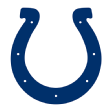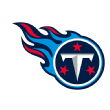Below are notes covering each of the NFL's 32 teams from a fantasy perspective. Use these tidbits to make the best waiver-wire, trade and lineup decisions for Week 3. Be sure to check back each week of the season for a new version of the Fantasy 32.
Throughout this piece, I'll be referencing "OTD." OTD stands for opportunity-adjusted touchdowns. It is a statistic that weighs every carry/target and converts the data into one number that indicates a player's scoring opportunity. For example, if a player has an OTD of 3.0, it means that a league-average player who saw the same number of carries/targets in the same area of the field would have scored three touchdowns.

The Cardinals started Kerwynn Williams in their first game without David Johnson, but it was veteran Chris Johnson who led the team with 11 carries and 44 rushing yards. Williams added 22 yards on nine totes. Andre Ellington was the passing-down specialist, handling two carries and five targets. With Arizona stuck in a tight game, Ellington was on the field for a position-high 30 snaps, 28 of which were pass plays. Johnson and Williams both played 17 snaps and Elijhaa Penny handled six. This remains a situation to avoid, but Ellington is the top play in PPR and Johnson the better asset in non-PPR leagues.

Tevin Coleman caught a touchdown and ripped off a 35-yard run against Green Bay on Sunday night, but it's clear that the third-year back remains well behind Devonta Freeman on the depth chart. Freeman matched Coleman's target total (two) and out-carried him 19 to 6 in the game. On the year, Freeman has played 73 snaps to Coleman's 44. Freeman, who has been a top-six fantasy running back each of the past two seasons, remains locked in as a top-end option at the position. Coleman is a fringe RB2 who should be in lineups when the matchup is right, as was the case on Sunday night.

Have the Ravens found their replacement for Dennis Pitta? Benjamin Watson emerged as the team's top tight end in Week 2, running 24 of a possible 36 pass routes. That was only four fewer than team leader Mike Wallace and one behind both Jeremy Maclin and Breshad Perriman. Watson paced the team with eight targets and caught each of them for 91 yards. Watson is 36 years old, but he was seventh at the position in fantasy points in 2015 and Pitta was eighth last season while leading all tight ends in receptions (86) as Baltimore's primary tight end. Watson should be viewed as a mid-pack TE2, but he very well could find himself in the TE1 mix in PPR formats.

LeSean McCoy was limited to 9 yards on 12 carries but paced the Bills in targets (seven), receptions (six) and receiving yards (34) against Carolina. McCoy has been on the field for 73 percent of the team's snaps and has run a route on 62 percent of the team's pass plays, both of which are his highest marks since 2013. McCoy's obscene target share (27 percent) is well above his career high (17 percent in 2010) and double where he was last season (13 percent). Buffalo has issues at wide receiver, but McCoy's usage in the passing game is sure to dip. The good news is that his workhorse role will allow high-end RB1 numbers moving forward. Needless to say, don't panic after the slow start.

Greg Olsen suffered a foot injury in Week 2 and will miss six to eight weeks, according to ESPN's Chris Mortensen. It's a massive loss for a team that has directed 22 percent of its targets to Olsen since he joined the team in 2011. Veteran Ed Dickson will be promoted to starting duties and should be viewed as a TE2 with some upside. Dickson has played a complementary role to Olsen over the past three-plus seasons, but he did post a 54-catch campaign with Baltimore in 2011. Devin Funchess, who posted 68 yards on four catches in Week 2, and Kelvin Benjamin stand to benefit from Olsen's absence and should see a slight uptick in target share. If you have the bench space, Olsen is a worthwhile stash for your playoff run, but he can be dropped in shallow leagues.

Jordan Howard managed only 7 yards on nine carries against Tampa Bay in Week 2. With Chicago getting blown out and dealing with a shoulder injury, he was out-snapped 40 to 29 by Tarik Cohen. Howard's status for Week 3 will need to be monitored, but if he's able to play, it's hard to panic over one game when Howard played well in Week 1 and was so dominant over 252 carries as a rookie. Cohen is obviously not going away, but the rookie isn't a threat for more than a handful of carries and has lined up at wide receiver on 29.9 percent of his snaps this year. While Howard is an interesting "buy low," his upcoming schedule (Pittsburgh, Green Bay, Minnesota, Carolina) is a roadblock to a bounce-back. The schedule opens up after that, so now might not be the best time to make your move.

Though two games, the Bengals have failed to score a single touchdown. Granted, the struggles have come against tough defenses in Baltimore and Houston, but it's a shocking development for a team that has been above average in touchdowns three of the past four years. The Bengals' schedule is about to get much easier (Green Bay, Cleveland, Buffalo), so it's not the worst time to consider buying low on the likes of Joe Mixon and A.J. Green. Mixon remains in a timeshare, but he leads the team with 17 carries and is only two behind Giovani Bernard with four targets. His role only figures to expand following the team's offensive coordinator change. Green has failed to score a touchdown, but has been targeted 16 times (28 percent target share) in two games.

Rashard Higgins went from the practice squad last week to leading the Browns in receiving in Week 2. Higgins caught seven of his 11 targets for 95 yards against Baltimore. He was on the field for 43 of the team's 50 pass plays. A fifth-round pick last year, Higgins was active for all 16 of the team's games as a rookie but was targeted only 12 times. With Corey Coleman injured and Kenny Britt struggling, Higgins very well could enter Week 3 as the team's top wideout. Higgins' production at Colorado State was off the charts, which made him a very intriguing prospect in last year's draft. He's well worth targeting on waivers this week.

If you were wondering if cornerback matchups matter, check out Dez Bryant's production through two games. Bryant has been targeted a whopping 25 times, but he has only nine catches for 102 yards and one touchdown to show. Bryant was shadowed by Janoris Jenkins in Week 1 and had his hands full with the Broncos elite cornerback group on Sunday. Bryant is up to a whopping seven end zone targets on the season, which is four more than any other player. The obvious thought here is "Well, the schedule can only get easier," but that's not necessarily the case. Bryant still has matchups against Patrick Peterson, Trumaine Johnson, Josh Norman (twice), Marcus Peters, Desmond Trufant, Casey Hayward, Janoris Jenkins and Richard Sherman on the docket, most of which will be shadow scenarios. Bryant will need to sustain this obscenely heavy usage, especially near the goal line, to remain afloat in fantasy. That's asking a lot, but you can't say you weren't warned.

Following his Week 2 shellacking of Dallas, Trevor Siemian sits second among quarterbacks in fantasy points this season. Siemian has tossed a league-high six touchdowns and run for one more. His efficiency is up quite a bit from a 2016 season in which he tossed 18 touchdowns and was picked off 10 times. Siemian's completion rate (59 percent to 65 percent), off-target rate (20 percent to 12 percent) and yards per attempt (7.0 to 7.5) marks have all improved. Siemian's remaining schedule is pretty attractive, though he'll hit a tough stretch around midseason. He'll face the Jets, Colts and Redskins during most fantasy playoffs. Siemian is certainly in the QB2 mix and will be a viable streaming option against Buffalo in Week 3.

The Lions only attempted 21 passes against the Giants on Monday night, but five of those throws were directed at Eric Ebron. One of those throws was into the end zone, which is notable considering Ebron entered with a mind-boggling six career end zone targets. That includes only two in 2016, which explains why he scored only one touchdown. Ebron caught the lone end zone look on Monday and posted 42 yards on five receptions. Despite missing five games over the past two seasons, Ebron has finished as a top-14 fantasy tight end both times. Now healthy and a full-timer in the Lions' offense, the fourth-year player is back in the TE1 mix.

Martellus Bennett hasn't been much of a factor in fantasy during his first two games with Green Bay, but there's plenty of room for hope. Bennett was targeted six times in the opener and on 11 occasions against Atlanta on Sunday night. The heavy usage has resulted in only 90 yards and no touchdowns, but Bennett has run a route on 76 percent of the team's pass plays. Bennett has finished as a top-12 fantasy tight end during each of the past four seasons in which he's played every game and -- despite the slow start -- he's well on his way to another in Green Bay's high-scoring offense. He figures to see a boost to his already generous 17 percent target with Jordy Nelson and Randall Cobb both battling injuries. Buy low if you need a tight end.

Lamar Miller remained Houston's lead back in Week 2, but rookie D'Onta Foreman played a much bigger role in his second game. Miller racked up 18 carries on 46 snaps, whereas Foreman handled 12 carries on 16 snaps. This came after Miller out-snapped Foreman 56 to 2 and out-carried him 17 to 1 in Week 1. Miller struggled with efficiency last year and sports a 3.6 yards per carry early this season. He'll continue to be involved on all three downs, which keeps him in the RB1 discussion, but Foreman's role on early downs only figures to increase. Foreman is a worthwhile bench stash.

Jack Doyle caught all eight targets for 79 yards against Arizona in Week 2. It was a performance that exceeded expectations considering the Colts' quarterback problems. Doyle has been a workhorse so far, having been on the field for 114 of the team's 119 offensive plays. He's run 64 pass routes, which is second most on the team and only two behind T.Y. Hilton. Doyle remains a risky play as long as Andrew Luck is out, but his heavy usage and Jacoby Brissett's tendency to look his way is enough to keep him in the TE1 discussion against Cleveland in Week 3.

Marqise Lee led the Jaguars with 12 targets in the team's first full game without Allen Robinson. He's been an every-down player and on the other end of a massive 30 percent of Blake Bortles' throws this season. Lee has only seven receptions for 76 yards to show for the big workload, but it's fair to expect better efficiency considering that he caught 63 passes for 851 yards and three touchdowns as the No. 2 target last season. Lee is a fringe flex play against Baltimore's tough secondary this week, but he will be a more viable play against easy and moderate defenses.

Kareem Hunt is 2-for-2. Following a record-setting NFL debut, Hunt put up 109 yards and a pair of touchdowns on 16 touches against a tough Eagles front seven. Any talk of a committee was put to rest, as Hunt was the only Chiefs running back to touch the ball. Hunt was on the field for 57 percent of the snaps in Week 1 and 73 percent in Week 2. His target share was down slightly (15 percent to 12 percent), but he was actually on the field for a larger share of the team's pass plays (49 percent to 54 percent). Hunt is averaging a league-high 7.6 yards per carry, including 2.4 after initial contact (third best), and is locked into the RB1 mix.

Keenan Allen entered the 2017 season with many question marks after he appeared in only nine of the Chargers 32 games during the 2015 and 2016 campaigns. Through two games, Allen has erased most of the concerns. He's up to 14 catches for 135 yards and one touchdown on 20 targets and sits sixth among wide receivers in fantasy points. Allen has been on the field for 92 percent of the Chargers' pass plays and has handled a career-high 27 percent of Philip Rivers' targets. Healthy and playing at a high level, Allen is back in the WR1 conversation.

Sammy Watkins was limited to two catches for 30 yards against the Redskins on Sunday. That disappointing production came despite only running seven routes against Josh Norman. Watkins has now caught all seven of his targets for 88 yards in his two games in Los Angeles. On the plus side, Watkins was on the field for 97 percent of the Rams' pass plays, which was way up from 68 percent in Week 1. Watkins' target share will inevitably rise, and though he still has a very tough schedule as cornerback matchups go this season, he will benefit from good matchups against the 49ers and Cowboys the next two weeks. Fire him up as a flex.

There are workhorses, and then there are what Jay Ajayi was in Week 2. Fresh after the team was off in Week 1, Ajayi was on the field for 94 percent team's offensive snaps and handled 28 of the team's 29 carries by a running back. Ajayi was targeted only twice, but he ran a route on 92 percent of Miami's pass plays. Though this massive workload is obviously unsustainable, it's very clear that Ajayi is the team's clear feature back. He's an elite play against the Jets this week.

Dalvin Cook was impressive again in Week 2, but his usage suggests he's only scratching the surface of a huge rookie season. Cook has 34 carries for 191 yards (5.6 YPC), but has yet to score a touchdown and has only five catches for 10 yards despite a hefty eight targets. Cook caught 33 balls for 488 yards (14.8 YPR) at Florida State last year and has the chops to do damage in that part of the game. Assuming his workload doesn't change, Cook should provide top-10 production moving forward. Sam Bradford's return from injury would be a big help for his prospects against Tampa Bay this weekend.

With the Patriots trying to protect a big lead against New Orleans on Sunday, Mike Gillislee racked up a team-high 18 carries. That was 14 more than any of his teammates. Gillislee found the end zone for the fourth time in two games but again went without a target and played fewer snaps than James White (29 to 28). Gillislee is what we thought he might be: LeGarrette Blount 2.0. Similar to Blount last season, Gillislee is on the field simply to carry the ball (33 carries on 49 snaps), especially near the goal line (NFL-high 2.7 rushing OTD), and nothing more. He's extremely touchdown-dependent, but Gillislee is an RB2 option in his current role.

Ted Ginn Jr. was expected to be a major beneficiary of Willie Snead's three-game suspension, but the field-stretcher has registered only seven catches for 77 yards on 11 targets during the team's first two games. Ginn has been on the field for 61 of the Saints' 84 pass plays, but he is behind both Michael Thomas (81) and Brandon Coleman (69) in the category. On the plus side, Ginn trails only Thomas (17) and Alvin Kamara (12) in targets and is always going to be a threat for a long touchdown, especially in New Orleans' high-scoring offense. He's barely worth flex consideration, however, against Carolina this week.

Brandon Marshall is two games into his Giants career ... so far, so bad. Marshall has one catch in each of the outings and sits at nine targets, two receptions, 27 yards and zero touchdowns. The 33-year-old did ranks second on the team with five targets on Monday night, but he had a costly drop -- and it's worth remembering that his role was bigger with Odell Beckham Jr. limited. It's possible that a healthy Beckham will open things up for Marshall, but the Giants' dreadful offense is unlikely to yield much fantasy production for secondary targets. Marshall is barely worth a roster spot in most formats.

Jermaine Kearse was rarely in the weekly fantasy discussion during his time in Seattle, but that has quickly changed in New York. Kearse posted seven catches for 59 yards in Week 1 and caught four passes for 64 yards and a pair of touchdowns against Oakland on Sunday. Incredibly, he sits fifth among wide receivers in fantasy points. Kearse's prospects have been helped by Josh McCown playing a bit better than expected. The veteran passer has been charted as "off target" on an NFL-low 5 percent of his throws. He's completed 67 percent of his throws despite dealing with six drops (second most). Kearse isn't a must-start yet, but he should be owned in all leagues and is in the WR3 mix against Miami this week.

Michael Crabtree stole the headlines with his three-touchdown afternoon, but Jalen Richard quietly put together a big day as the change-of-pace back to Marshawn Lynch. Richard posted 109 yards and a score on only eight touches. The high-end efficiency is nothing new for Richard, who averaged 5.9 yards per carry (second best), 2.7 of which came after contact (third), last season. If Lynch goes down, Richard will form a committee with DeAndre Washington, but he'd certainly be a worthwhile flex option in that scenario.

LeGarrette Blount went without a carry against the Chiefs in Week 2. Darren Sproles (10 carries) and Wendell Smallwood (three) carried the "load" for Philly. Sproles has now been on the field for 80 (or 60 percent) of the Eagles' offensive snaps this season. Blount (29 snaps) and Smallwood (28) have played a complementary role. Blount figures to play more when the Eagles aren't playing from behind, but he's nowhere near a consistent enough role to be in fantasy lineups. Sproles is a solid flex option.

After scoring a pair of touchdowns in Week 1, Jesse James crashed back to earth with four catches for 27 yards and no scores against Minnesota on Sunday. Does this mean his Week 1 performance was a flash in the plan and he's without fantasy value moving forward? I don't think so. Despite the drop-off, James was on the field for all but two of the team's 69 offensive snaps. He ran 30 of 37 possible pass routes and has been on the field for all but four of the Steelers' pass plays this season. James has handled 19 percent of the team's targets on the year and sits 12th in the league with a 1.5 OTD. He's a fringe TE1 with big scoring upside.

Game script has limited his carry total so far this season, but Carlos Hyde's effectiveness has been off the charts. Hyde posted 124 yards on 15 carries in a tough Week 2 matchup at Seattle and is now averaging 7.0 YPC (second highest in the NFL) on 24 attempts through two games. Hyde is also averaging 2.4 yards after contact, which is fifth best at the position. Hyde joins LeSean McCoy with the 12th-most fantasy points among running backs. No back who has yet to score a touchdown has scored more fantasy points than the duo. Hyde remains a strong RB2 play.

It's taken a couple of weeks, but it appears a feature back has finally emerged in Seattle. And it's not Eddie Lacy or Thomas Rawls. It's 2017 seventh-round pick Chris Carson. Carson carried the ball 20 times for 93 yards in Week 2 and has now played 74 snaps through two games. Lacy was a healthy scratch in Week 2 and Rawls was on the field for only 16 plays on Sunday. C.J. Prosise has helped out as a passing-down specialist, but has only seven touches on 31 snaps in the two outings. Considering he was a seventh-rounder, Carson may seem like a fluke, but he's a player I suggested could be "this year's Jordan Howard" way back in March. Carson is averaging 5.1 yards per carry, including 2.6 after contact, which is second best in the league behind only Derrick Henry (minimum 20 carries). Carson is owned in under 10 percent of ESPN leagues, but that should change in a hurry this week. Place your claims.

As expected, Jacquizz Rodgers proved to be the Buccaneers' lead back in place of Doug Martin in Week 2. Rodgers carried the ball 19 times but wasn't targeted on 31 snaps. Peyton Barber benefited from garbage time en route to 10 carries on 15 snaps. Charles Sims was the team's passing-down specialist, with the Bucs running a pass play on 19 of his 21 snaps. The Bucs will have their hands full with a tough Vikings defense in Week 3, so only Rodgers should be considered for a flex spot. Sims has some appeal in deep PPR leagues. Doug Martin will be back in Week 5 and figures to push Rodgers to the bench.

DeMarco Murray has been the Titans' lead back so far this season, but a hamstring injury allowed Derrick Henry a big second half against Jacksonville on Sunday. Henry now has 117 yards and a touchdown on 20 carries through two games. He's averaging 5.9 yards per carry, a league-high 2.3 of which has come after initial contact. Henry's strong play may earn him a larger role, but Murray still played more snaps on Sunday and figures to remain in that role against Seattle this week, assuming he's healthy. If Murray misses time, Henry will be in the RB2 mix in what should be a low-scoring affair.

Rob Kelley is expected to miss some time with a rib injury, which opens the door for rookie Samaje Perine to handle early-down duties for the Redskins. Perine was limited to 67 yards on 21 carries (3.2 YPC) against the Rams on Sunday, but he figures to handle a bulk of the carries against Oakland in Week 3. Chris Thompson, meanwhile, ran for two touchdowns on Sunday but carried the ball only three times. In fact, he entered the day with only three career rushing scores in four seasons. Thompson remains the Redskins' top passing-down back, but he usually does very little as a rusher and is thus best viewed as an RB3 in PPR leagues. Perine has similar value as long as Kelley is out.
